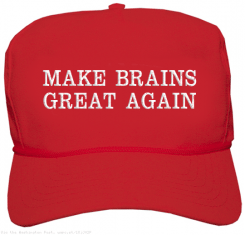I don’t think Australians have ever taken more notice of, much less come to understand, US political battle-lines more than in recent months. So heading to the US last week for the first time in a while, I was intrigued to see what the grassroots sentiment was like. And the word on the street proved more interesting than I expected.
From a local independent bookshop owner, who going by the window display, I took to be liberal-leaning, I got a very blasé “well, I didn’t vote for it…” response. A traditionally conservative Mid-West grain farmer of several generations was upset about the “closing off” of his country. But most interesting of all, was the aging-hippy-type Uber driver I had who told me that even though he was as far left of liberal as you could possibly get, he found himself agreeing every morning with what the conservatives were saying on TV. Given my albeit narrow view of US politics, these all seemed like twilight zone responses to me.
But one thing was glaringly obvious from this; recent events in the US have certainly turned people’s political leanings on their head and led lots of people to think about things in very different ways. Now from the outside this looks like chaos, and the jury is still out on where this will ultimately take the US, but the “disruption” of thought at the popular level might, if effectively harnessed, end up taking the US in a surprising direction. It will be interesting to watch.
This led me to think about business leadership and what it takes to trigger fundamental change in the status quo downstream in organizations; how we can disrupt and then harness change in a coordinated way.
There is always going to be something spectacular about the CEO or business leader who is suddenly parachuted into an ailing organization to execute hard and fast change to bring it back from the brink of collapse. But even more critical to business leadership, although usually far less celebrated, is the executive who challenges the status quo in their organization even though things may appear to be more or less on-track.
This is, in my opinion, the definition of true leadership. A strong and ongoing appetite for making change, not for change’s sake, but with the clear and guided intent to stave off complacency while engendering agility and adaptiveness; critical skills in today’s marketplace essential not only to keep up with relentless change but to actually be at the helm of it.
How is it that some organizations appear to be able to constantly and consistently reinvent themselves , their offerings, and their messages to great effect while other’s actually lose value through the same process?
Continuously challenging the status quo actually requires a surprisingly coordinated approach across both the cultural, strategic and operational realms of an organization. It means we as business leaders need to inspire a pole-position, value-creating change mentality within our organizations, as well as find creative ways to communicate to our clients that challenging the status quo is an essential and well-informed way for them to add value to their organizations as well.


